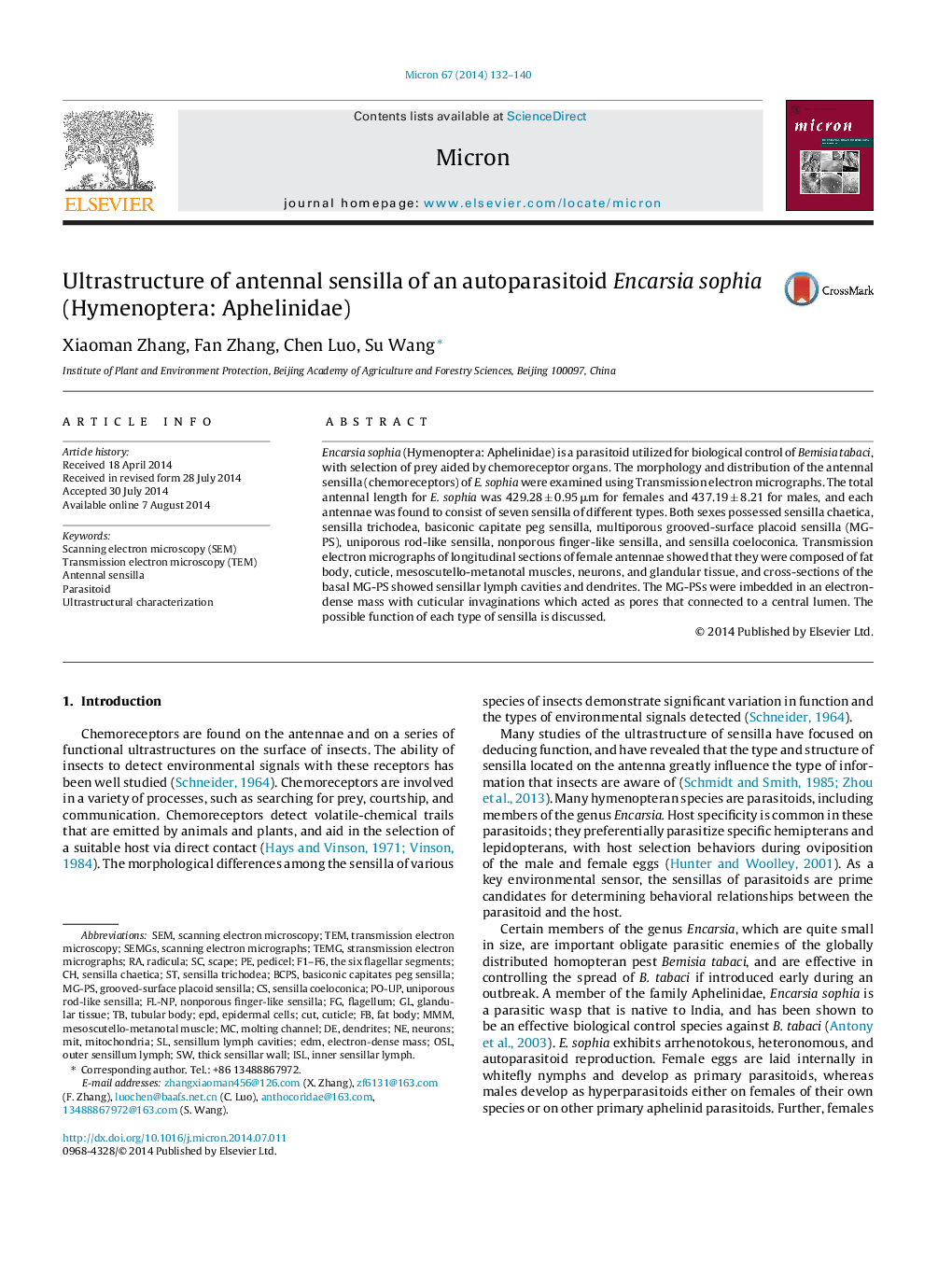| Article ID | Journal | Published Year | Pages | File Type |
|---|---|---|---|---|
| 1588850 | Micron | 2014 | 9 Pages |
Abstract
Encarsia sophia (Hymenoptera: Aphelinidae) is a parasitoid utilized for biological control of Bemisia tabaci, with selection of prey aided by chemoreceptor organs. The morphology and distribution of the antennal sensilla (chemoreceptors) of E. sophia were examined using Transmission electron micrographs. The total antennal length for E. sophia was 429.28 ± 0.95 μm for females and 437.19 ± 8.21 for males, and each antennae was found to consist of seven sensilla of different types. Both sexes possessed sensilla chaetica, sensilla trichodea, basiconic capitate peg sensilla, multiporous grooved-surface placoid sensilla (MG-PS), uniporous rod-like sensilla, nonporous finger-like sensilla, and sensilla coeloconica. Transmission electron micrographs of longitudinal sections of female antennae showed that they were composed of fat body, cuticle, mesoscutello-metanotal muscles, neurons, and glandular tissue, and cross-sections of the basal MG-PS showed sensillar lymph cavities and dendrites. The MG-PSs were imbedded in an electron-dense mass with cuticular invaginations which acted as pores that connected to a central lumen. The possible function of each type of sensilla is discussed.
Keywords
Related Topics
Physical Sciences and Engineering
Materials Science
Materials Science (General)
Authors
Xiaoman Zhang, Fan Zhang, Chen Luo, Su Wang,
